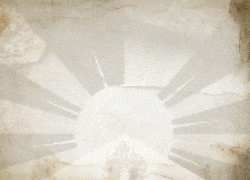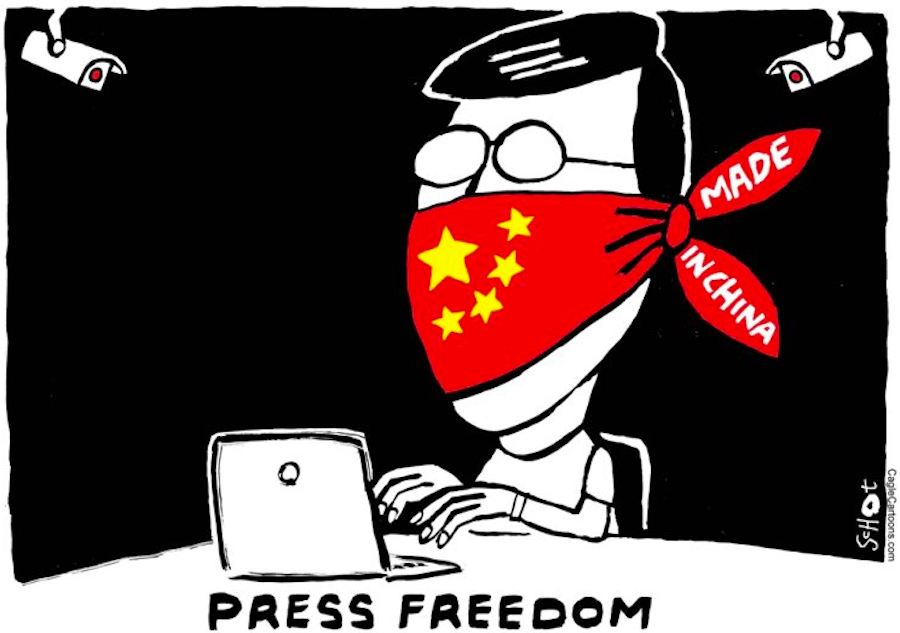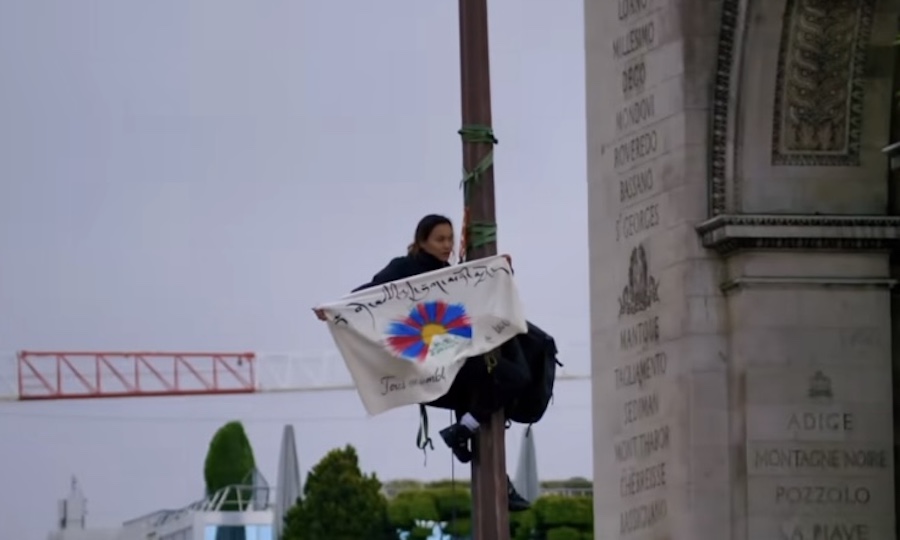Documentary films in India tend to get little to no attention simply because Desi’s prefer masala to reality. So what happens when a well-known Hindi cinema assistant/associate director decides to make a documentary on the trials and tribulations of Tibet? You get Anil Sadaragani. The prominent journalist, who has been a part of Madhur Bandarkar’s Fashion and Vivek Oberoi starrer Prince, felt the need to take it on himself to make a film that follows the life of His Holiness The Dalai Lama. Read on as he speaks heaps about the film and where it is headed in the near future.
—-
 How did you enter the world of cinema? And did you always know you wanted to be a part of films?
How did you enter the world of cinema? And did you always know you wanted to be a part of films?
Before I made a career switch to films, I was a journalist for 7 years in Bombay. Although I never covered the Bollywood beat during my journalism years, (save for the odd insignificant interview a senior film journalist might have rejected!), I did have perhaps one or two casual conversations with the award-winning and acclaimed filmmaker, Madhur Bhandarkar.
In the back of my head, I knew I wanted to shift to filmmaking full time and so while in the media, I would write my scripts late at nights or on weekends. Finally, in 2006, when I was at the Bombay Times and in the midst of an insane schedule, I made my first short film, Dim. I made it on a budget of Rs. 4,000 (less than $ 100) and roped in friends (and even my mother!) in it. It made it to the official selection list at the New York Short Film Festival, the San Francisco Short Film Festival and the Festival De Cine De Barcelona Internacional, all in 2007.
When I left Bombay Times the following year, my friend and fellow journalist Chandrima Pal, who had just taken over as editor of Network 18’s newly launched entertainment website (the now defunct buzz18.com), saw my short and told me to start working on the website as Broadband Producer, creating and producing shorts for the website. During that time, I learnt that Madhur was all set to start his next film, Fashion. I hounded him for three months to take me on as an assistant director (although he hardly knew me!) and finally his associate director told me to join the team. Apart from working with a genius like Bhandarkar, I also wanted to work with Priyanka Chopra, who I love! Even while we were making the film, we could see she was going to win awards for her performance in Fashion.
Tell us about your stint with journalism in India. What was that experience like and how did that help you with your path to filmmaking?
Journalism just happened to me really. I completed my B.A. in English Literature and had taken up law (since I had no clue what to do in life!). As it turned out, I just could not grasp law! So, I decided to take up a job. I answered two ads in the classifieds (an obsession then!) – one, for Front Desk Executive at the Taj Mahal Hotel, the other, for a reporter with the Free Press Journal (FPJ). The same day I was rejected at the hotel, I received a call from FPJ and got the job.
I started out covering the court beat (ironical!).
Two months later, I moved to the Afternoon Despatch and Courier where the chief reporter rejected me initially, citing lack of experience! Of course, I was hired, being the last reporter that the legendary Behram Contractor (editor of Afternoon) would hire. He expired 3 months after I joined (I had nothing to do with that!!). I loved working there, covering the city beat, reporting on city happenings. That was my real foundation in journalism (and office politics!). Mark Manuel (now Bombay Times editor) was Managing Editor after Behram, the latter who had set high standards in journalism. Hubert Vaz, (the chief reporter who rejected me initially) ended up inspiring and pushing me over the edge to get the news (no matter what) and file per deadline. I still am in touch with Hubert Vaz and Farzana Contractor, CEO of the newspaper and dynamic media person.
A year later, I found myself at Oomph! Magazine, a fashion and lifestyle quarterly, published by the enterprising Kamlesh Shah. Shernaz Engineer, a former columnist with Bombay Times (BT), was editor. While feature writing was new to me, and I took to it like fish to water, I didn’t want to let go my grip on news reporting, so I moonlighted with the Downtown Plus (DTP), a Times of India supplement, filing four to six stories a week. I would work from 10am to 6pm at Oomph! and then post 6pm, go out into the city and pursue stories for DTP. It was at DTP, I met someone who would be instrumental in shaping up the greater part of my career in journalism – Jitesh Pillai, now dynamic editor of Filmfare, then assistant editor to Malavika Sanghvi. While freelancing for DTP, I quit Oomph!, worked with Mid-Day Metro Malad, a media organization called Mediascope and a newly launched magazine The Sindhian (with legendary film journalist Rauf Ahmed), in a span of a year. It was Jitesh who believed in me and recognized my potential and who recommended me to Jamal Shaikh, page 3 editor at Bombay Times then (and now current editor of Men’s Health, India). Jamal got me to meet Ayaz Memon, then editor of Bombay Times (and then the HR, with whom I negotiated a fat salary!).
While in BT, the editorship changed hands. The bright, young and savvy Gauri Sinh (a former Miss India finalist) took over the mantle of editor within months after I joined. A year and a half later, when the media boom struck Bombay in mid-2005, I moved with Jamal to the newly launched DNA (lured by great money, of course!), only to return to BT in 15 days (with more pay, of course!). When I moved back to BT, someone spread a rumor that I was a spy for the Times of India and had stolen the blue prints of the soon-to-be launched DNA! It was great fun! I had never been embroiled in rumor myself (although reporting them was my job!). I quit Bombay Times on February 09, 2007, when my editor Gauri quit as well, to move to the movies, and never looked back.
During the time I worked in the media, I made friendships that have endured till today and met some truly diverse people, celebrities and true achievers who really touched me in their own unique ways. I never considered myself a good journalist in the least because I was never really into reporting juicy gossip and covering other people’s lives. I simply wanted to be inspired. So, amidst all the numerous newsbreaks, scoops, society interviews and party reports, one story I did, that stands out in my career and of which I am very proud, was the one that helped a little boy complete his education and graduate.
Tell us about your current project, your documentary on Tibet. What does the documentary talk about?
‘Tibet Abandoned’ was not going to happen at all. This is because the producer, Mr. L.P. Pontsang of the Tibet India Foundation, for whom I wrote and directed the documentary, wanted to make a fictional romance between a Tibetan boy and Polish girl, to be shot between Poland and India! I pointed out to him that this was his first big film venture and since Tibet was commemorating 50 years of exile by the Chinese (2009), documenting that would be more timely.
Tibet Abandoned questions the impact of the accolades, honors, medals and awards bestowed upon His Holiness the 14th Dalai Lama through the years. Have they achieved anything or have they amounted to mere tokenism?
Vrushali Haldipur, a former journalist with CNNIBN, co-wrote it along with Mr. Pontsang and me. She gave the script its final shape, really. We had a great editor Gaurav Meshram and brilliant musicians, Amey Shildhankar and Pasang Dolma, who’s ‘Om Mane Padme Hum’ sets the tone of the film. We got immense support from the Tibet Government-in-Exile, Tibetans, world citizens and many close friends as well.
The documentary has been accepted by many film festivals. Tell us about the different reactions the film has received.
As of now, Tibet Abandoned has found entry into the Action On Film Festival that will be held in Pasadena, California in July this year. I happened to meet the head of the festival, the dynamic Del Weston and asked him to see the documentary. I did not think he would really watch it but 10 days later, he called me and said he loved the documentary and that it is entered into his film festival, with the submission fee waived! We are obviously elated! We are now hoping to enter it in other festivals, but I don’t want to talk about that until something happens. So far, the response to Tibet Abandoned has been really heart-warming and encouraging. It is a straightforward documentary and some close friends who have seen it have found it relevant for its time. Carole Dean, the legendary pioneer of Short Ends, has said this about the documentary: “This is really an important film. I fully support this issue, Poland, France, etc. but no one will fight China to make a stand for Tibet. In the meantime, we are losing one of the greatest treasures of our civilized world, the spiritual leadership Tibet gave to all of us. Thank you for sharing this film. I really enjoyed seeing the Dalai Lama in such good health. Just watching him is a blessing. You are an exceptionally talented filmmaker.”
You also managed to interview the Dalai Lama. What was that experience like?
We almost did not meet His Holiness! We trekked for two days, from Bombay via Delhi, going by plane, train, bus and car to Dharamsala to meet him and we were almost not going to meet him! I thought I was going to die from the anxiety! When we were in Dharamsala for the appointment on April 18th 2010, two IPL games just happened to be in town at the new cricket stadium in Dharamsala. His Holiness had been invited to give the games his blessings, and was meeting the cricketers in a private audience. Due to that, his entire schedule went awry and all his appointments were pushed to the next day. I was sure we were not going to meet him. However, we did, the next day! His amazing Joint Secretary, Mr. Tenzin Taklha, personally ensured met His Holiness.
Words cannot do justice to the experience of being in His Holiness’s presence. His Holiness is so tuned into the Universe; you can feel the energy and the aura around him. It might sound like I am exaggerating but he is something else. Imagine living, breathing, thinking, eating, sleeping, desiring only one thing in life for more than 60 years of your life: Freedom and justice for Tibet.
Before he met us, he was in a marathon two hour press conference, then he met someone else for 10 minutes before giving us 30 minutes after which he went on to meet a huge delegation of American students. Then he broke for lunch, met more people and went off to the stadium to bless the IPL match that evening!
Bhanu Athaiya accompanied me on that shoot because when she heard I was going to meet His Holiness, she, being the adventurous person she is, jumped at the chance of meeting the Dalai Lama. She even spent for her own travel! So, there we were in Dharamsala with His Holiness, soaking in his amazing energy and positivity (as his muscular bodyguards stood outside!). The experience of merely being in the presence someone as spiritually advanced like His Holiness, is a miracle!
How did you capture Tibet and the atrocious situations that it is enduring?
We did not travel to Tibet as budget restraints did not allow us to. We did not want to risk being imprisoned in Tibet or China (as crazy as that sounds but true, since many who have traveled to Tibet in the past have been!). At the end of the day, all we want to do is point out that the “support” shown by the world in the form of medals, honors, honorary citizenships are mere tokens of diplomacy. Had we trapped ourselves in Tibet, we would not have been able to achieve this important point in the Tibetan freedom movement. So, we did the next best thing. We met refugees who had just crossed the border at the refugee centre in Dharamsala, who spoke about their ordeal of escaping the oppressed atmosphere in the Tibet Autonomous Region (TAR). We managed to obtain authentic photos (not easily available) only recently snapped in Tibet that were smuggled out from there, showing the gross Human Rights violations taking place there. We got a Chinese-American to narrate the documentary for us, which adds immensely to our statement about the cause, the world we live in and the human spirit.
What is the point of the documentary and what do you hope to achieve from it?
As someone mentioned to me recently, maybe seeing this documentary will raise questions in people’s minds about the state humanity is in currently. 50 years of Human Rights violations is unthinkable. Imagine if we were in such a situation – exiled from one’s homeland, having to live the life of a refugee in a strange land for the rest of one’s life. 50 years is a lifetime for many and spans at least three generations. We hope this documentary raises pertinent questions in people’s minds. Of course, there are skeptics aplenty and even if we can make one person question the apparent status quo of the situation, we will have achieved our goal.
Where does the film travel to next?
Like I said, until we have confirmation that it has been accepted into a festival, I cannot say where it is going to show. I am hoping the Los Angeles Film Festival, two Europeans film festivals, two other important US film festivals and a prominent South American film festival. We hope to show it in India as well, despite the fact that the Indian public doesn’t really care about the Tibetan cause. (Perhaps because there are too many gross human rights violations already occurring in India, daily!)
What will we see from you next after your documentary?
I am talking with a fellow filmmaker about collaborating on an interesting subject for a documentary. It is initial but I hope it will happen. I am also hoping that the Bollywood film I wrote, titled Pyaar Happens, gets into production this year. It is to be directed by Hadi Ali Abrar, who made the film Ramaa the Savior (Nov 2010). We are currently looking for a producer. I have also created a web series for my brother’s production company, Hanuman Media, that will hopefully make its transition to TV this year as well and which will see me doing some more writing!
To read the full version of interview, CLICK HERE









